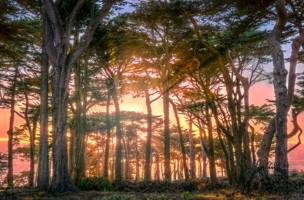
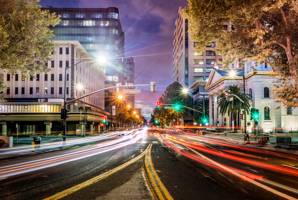
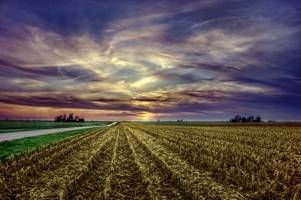

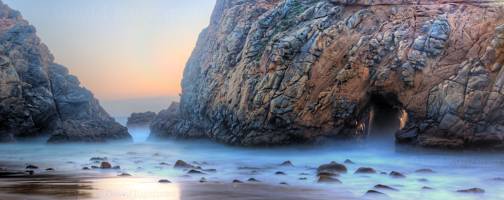
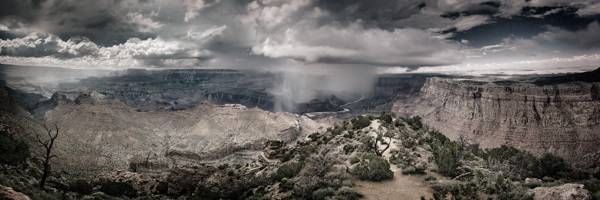

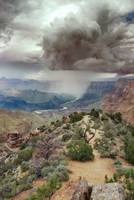
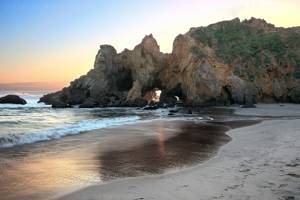



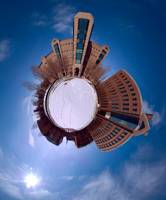










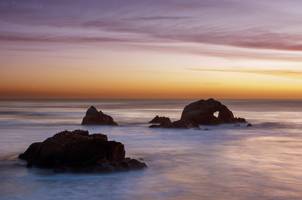

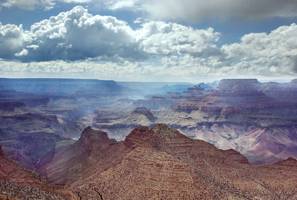




High dynamic range photography refers to combining multiple photographs of the same scene taken at different exposure levels. This is done to increase the amount of detail that is visible across the entire scene, regardless of how much the light varies within the scene.
If a particular scene or subject has both very bright and very dark areas, then taking a single photograph may make it hard to see any detail in the extremely bright and/or extremely dark areas of the scene. For example, if the exposure is set so the dark areas are well exposed, then any bright areas might look completely white with no detail. Because of the exposure settings, the amount of light in those regions completely overwhelms the sensor (or film). Conversely, if the exposure is set so bright areas are well exposed, the dark areas might look pure black. In this case, the exposure settings as such that not enough light reaches the sensor (or film), resulting in black areas with little to no detail.
By taking multiple photographs at different exposure levels, each region of the scene can be photographed with the proper exposure level for that region. During post processing, the photographs are combined to create a single high dynamic range image. As long as the initial set of photographs at different exposure levels covered the light range well, the resulting HDR image will have plenty of detail across the entire scene.
Tone mapping can be use used to convert a high dynamic range image back down to a standard dynamic range (SDR) image. Several tone mapping algorithms exist, each giving the resulting SDR image a different look and feel as it wider set of HDR values down to the more narrow set of SDR values. Many common image formats, such as the standard JPEG format, are SDR formats. As such, tone mapping needs to be performed when exporting the HDR image to these formats.
High dynamic range photography refers to combining multiple photographs of the same scene taken at different exposure levels. This is done to increase the amount of detail that is visible across the entire scene, regardless of how much the light varies within the scene.
If a particular scene or subject has both very bright and very dark areas, then taking a single photograph may make it hard to see any detail in the extremely bright and/or extremely dark areas of the scene. For example, if the exposure is set so the dark areas are well exposed, then any bright areas might look completely white with no detail. Because of the exposure settings, the amount of light in those regions completely overwhelms the sensor (or film). Conversely, if the exposure is set so bright areas are well exposed, the dark areas might look pure black. In this case, the exposure settings as such that not enough light reaches the sensor (or film), resulting in black areas with little to no detail.
By taking multiple photographs at different exposure levels, each region of the scene can be photographed with the proper exposure level for that region. During post processing, the photographs are combined to create a single high dynamic range image. As long as the initial set of photographs at different exposure levels covered the light range well, the resulting HDR image will have plenty of detail across the entire scene.
Tone mapping can be use used to convert a high dynamic range image back down to a standard dynamic range (SDR) image. Several tone mapping algorithms exist, each giving the resulting SDR image a different look and feel as it wider set of HDR values down to the more narrow set of SDR values. Many common image formats, such as the standard JPEG format, are SDR formats. As such, tone mapping needs to be performed when exporting the HDR image to these formats.